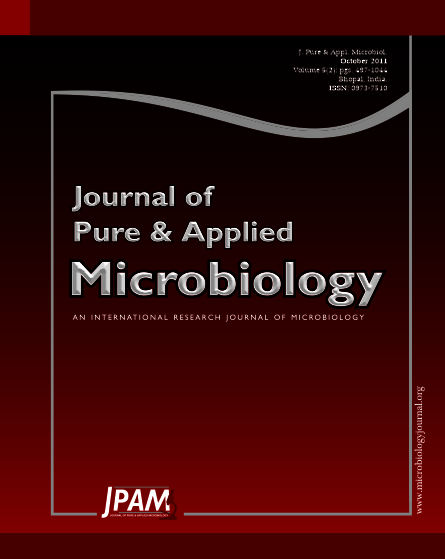About twenty fungi had been isolated from rhizosphere and rhizoplane of four local crop plants as cotton, banana, tuver and brinjal from agricultural soils at Bhavnagar, out of which 10 belonged to genus Aspergillus, 3 to Penicillium and 3 to Fusarium while, 4 isolates were unidentified. Diversity was assessed using several indices for relative frequency, eveness, richness, shannon’s and similarity indices. Based on relative frequency Aspergillus sp. was the predominant microflora at the four crop plants while, Fusarium sp. could be grouped as just present species. Brinjal was the most diverse and it represented maximum evenness while, with respect to richness it was least. Except 3, all the isolates produced siderophores that were trihydroxamate hexadentates. Quantification of siderophores revealed Fusarium sp. 3 from cotton to be the maximum siderophore producer (468 µg/ml) while, Aspergillus sp. 7 from banana the least (47 µg/ml). Thus, even though Aspergillus spp. was the predominant microflora at all the 4 crop plants, Fusarium spp. were the potential siderophore producers. Hence, irrespective of the predominant Aspergillus spp. in the rhizosphere, Fusarium spp. can prove to be potential candidates for plant growth promotion. The present study thus, does not indicate any relationship between the dominant microflora present in the rhizosphere and their ability to promote plant growth through siderophore production.
Rhizosphere, Biocontrol, Diversity, Siderophores, Trihydroxamate hexadentates
© The Author(s) 2011. Open Access. This article is distributed under the terms of the Creative Commons Attribution 4.0 International License which permits unrestricted use, sharing, distribution, and reproduction in any medium, provided you give appropriate credit to the original author(s) and the source, provide a link to the Creative Commons license, and indicate if changes were made.


